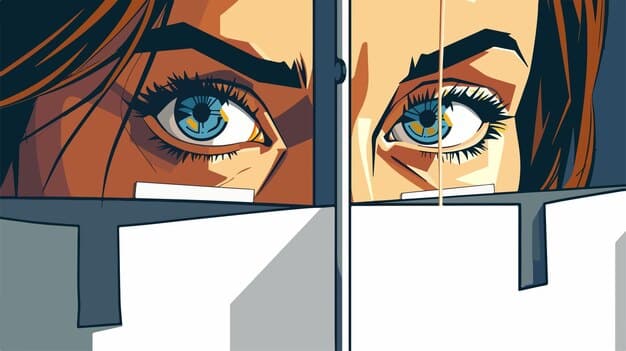From Page to Screen: A Critical Comparison of J-Dramas & Adaptations

From Page to Screen: A Critical Comparison of J-Dramas explores the nuances of adapting Japanese dramas from their source material, highlighting successes and failures in capturing the essence of the original work.
The transition From Page to Screen: A Critical Comparison of beloved J-Dramas to their live-action adaptations is always a moment filled with both anticipation and trepidation. Can the on-screen version truly capture the magic of the original source material?
The Allure of J-Drama Adaptations
J-Dramas, with their captivating storylines and relatable characters, have garnered a significant international following. Adapting these stories for the screen allows for a wider audience to experience and appreciate Japanese culture and narratives. But what makes a successful adaptation, and what are the common pitfalls?
The appeal lies in the potential to bring cherished stories to life in a new medium, often introducing them to a broader audience. The visual and auditory experience further enriches the storytelling, adding depth and nuance that may not be fully realized in the original format.
Capturing the Essence
A successful adaptation hinges on retaining the core elements that made the original work popular. This includes the characters, their relationships, and the overall themes of the story. Diluting or altering these foundational aspects can lead to disappointment among fans.
Expanding the Narrative
Adaptations also have the opportunity to expand upon the original narrative, providing additional context or exploring characters in greater detail. This can enhance the storytelling and offer new perspectives for both long-time fans and newcomers.
- Faithful recreation of iconic scenes and dialogues.
- Careful casting to embody the spirit of the characters.
- Enhancing emotional impact through visual and auditory elements.
Ultimately, the goal is to create an adaptation that honors the source material while offering a fresh and engaging experience for viewers.

When Adaptations Shine: Success Stories
Not all adaptations are created equal. Some manage to capture the spirit and essence of the original work, earning critical acclaim and fan adoration. These success stories offer valuable insights into the art of adaptation.
These adaptations often resonate with viewers because they demonstrate a deep understanding of the source material and a commitment to honoring its core values. They balance faithfulness with creativity, resulting in a compelling and enjoyable viewing experience.
Faithful Adaptations
Some adaptations prioritize staying true to the original story, meticulously recreating key scenes and dialogues. This approach can be particularly effective when the source material is highly regarded and beloved by fans.
Creative Interpretations
Other adaptations take a more creative approach, reinterpreting the story in new and innovative ways. This can be a risky strategy, but it can also result in a fresh and exciting take on familiar material.
- “Hana Yori Dango”: A classic example of a successful manga adaptation.
- “Nodame Cantabile”: Praised for its accurate portrayal of classical music and quirky characters.
- “Death Note”: While controversial, the live-action series remains a popular adaptation.
By examining these successes, we can learn about the key ingredients for a successful adaptation and the importance of respecting the source material.
The Pitfalls of Adaptation: Where Things Go Wrong
Despite the best intentions, some adaptations fall short of expectations. These failures often stem from a misunderstanding of the source material or a misguided attempt to cater to a wider audience.
These adaptations can disappoint fans due to a lack of faithfulness, poor casting choices, or a deviation from the original story’s themes. The result can be a watered-down version of the original, lacking the charm and appeal of the source material.
Character Misinterpretations
One of the most common pitfalls is misinterpreting the characters in the original story. Altering their personalities or motivations can alienate fans and undermine the entire narrative.
Plot Deviations
Another potential problem is deviating too far from the original plot. While some changes may be necessary to adapt the story for the screen, significant deviations can disrupt the overall flow and impact of the narrative.
- Altering character personalities to fit a specific actor.
- Changing the ending or resolution of the story.
- Adding unnecessary subplots or characters.
Learning from these mistakes can help future adaptors avoid similar pitfalls and create more successful translations of beloved stories.

The Role of Cultural Nuance
J-Dramas often incorporate cultural nuances that may be unfamiliar to international audiences. Successfully translating these nuances is crucial for maintaining the authenticity and integrity of the story.
Understanding and respecting Japanese culture is essential for creating an adaptation that resonates with both domestic and international viewers. Neglecting these nuances can lead to misunderstandings and a diluted viewing experience.
Language and Etiquette
The nuances of Japanese language and etiquette play a significant role in many J-Dramas. Accurately conveying these elements can add depth and authenticity to the adaptation.
Social Context
Understanding the social context in which the story takes place is also crucial. This includes factors such as family dynamics, social hierarchies, and cultural values.
- Using subtitles or dubbing to explain cultural references.
- Employing cultural consultants to advise on accuracy.
- Presenting traditions and customs with respect and understanding.
By carefully considering these cultural nuances, adaptors can ensure that their work is both engaging and respectful of Japanese culture.
Directorial Vision vs. Source Material Fidelity
The director’s vision plays a significant role in shaping an adaptation. Balancing this vision with the need to remain faithful to the source material can be a delicate balancing act.
The director’s interpretation of the story and their artistic choices can have a profound impact on the final product. A successful adaptation requires a director who understands and respects the source material while also bringing their own unique perspective to the project.
Artistic Interpretation
Directors often bring their own artistic interpretation to the story, adding their own style and flair. This can enhance the viewing experience, but it can also alienate fans if it deviates too far from the original vision.
Balancing Act
The key is to find a balance between personal expression and faithfulness. A director who is too rigid in their adherence to the source material may stifle their creativity, while a director who is too free in their interpretation may lose the essence of the original story.
- Allowing the director creative freedom within defined parameters.
- Providing the director with access to the original creators.
- Encouraging open communication and collaboration throughout the production process.
Ultimately, the goal is to create an adaptation that is both faithful to the source material and a compelling work of art in its own right.
The Future of J-Drama Adaptations
As J-Dramas continue to gain popularity around the world, the trend of adapting them for the screen is likely to continue. This presents both opportunities and challenges for filmmakers and storytellers.
The future of J-Drama adaptations lies in finding new and innovative ways to bring these stories to life for a global audience. Embracing technology and new storytelling techniques can help to enhance the viewing experience and attract new fans.
Embracing Technology
The rise of streaming services and digital platforms has opened up new possibilities for J-Drama adaptations. These platforms allow for greater flexibility in terms of storytelling and production.
International Collaborations
Collaborations between Japanese and international filmmakers can also help to bridge cultural gaps and create adaptations that resonate with a wider audience.
- Exploring new genres and formats.
- Utilizing virtual reality and augmented reality technologies.
- Promoting diversity and inclusivity in casting and storytelling.
By embracing these opportunities and addressing the challenges, the future of J-Drama adaptations looks bright.
| Key Point | Brief Description |
|---|---|
| 🎭 Essence Capture | Retaining core elements makes for a good adaptation. |
| 🎬 Adaptation Pitfalls | Misinterpreting characters or plots can lead to failure. |
| 🌍 Cultural Nuance | Translating cultural context is crucial for authenticity. |
| ⚖ Balance | Balancing director’s vision with fidelity is a challenge. |
Frequently Asked Questions
▼
A successful adaptation retains core story elements, like characters and themes, while introducing them to a wider audience through visual and auditory enhancements, enriching the narrative.
▼
Common pitfalls include misinterpreting characters, deviating too much from the original plot, and failing to convey cultural nuances, which can alienate fans of the original material.
▼
Cultural accuracy is paramount; accurately translating language, etiquette, and social context adds authenticity and depth, ensuring the adaptation resonates with both domestic and international audiences.
▼
A director’s vision significantly shapes the adaptation; balancing their artistic interpretation with faithfulness to the source material is crucial for creating a compelling and respectful viewing experience.
▼
The future involves embracing technology, international collaborations, and new storytelling techniques to enhance the viewing experience and attract new fans of J-Dramas worldwide through innovative and respectful adaptations.
Conclusion
In conclusion, the journey from Page to Screen: A Critical Comparison of J-Dramas is a complex one, filled with both triumphs and challenges. By understanding the key elements of successful adaptations and avoiding common pitfalls, filmmakers can continue to bring these beloved stories to life for audiences around the world.





